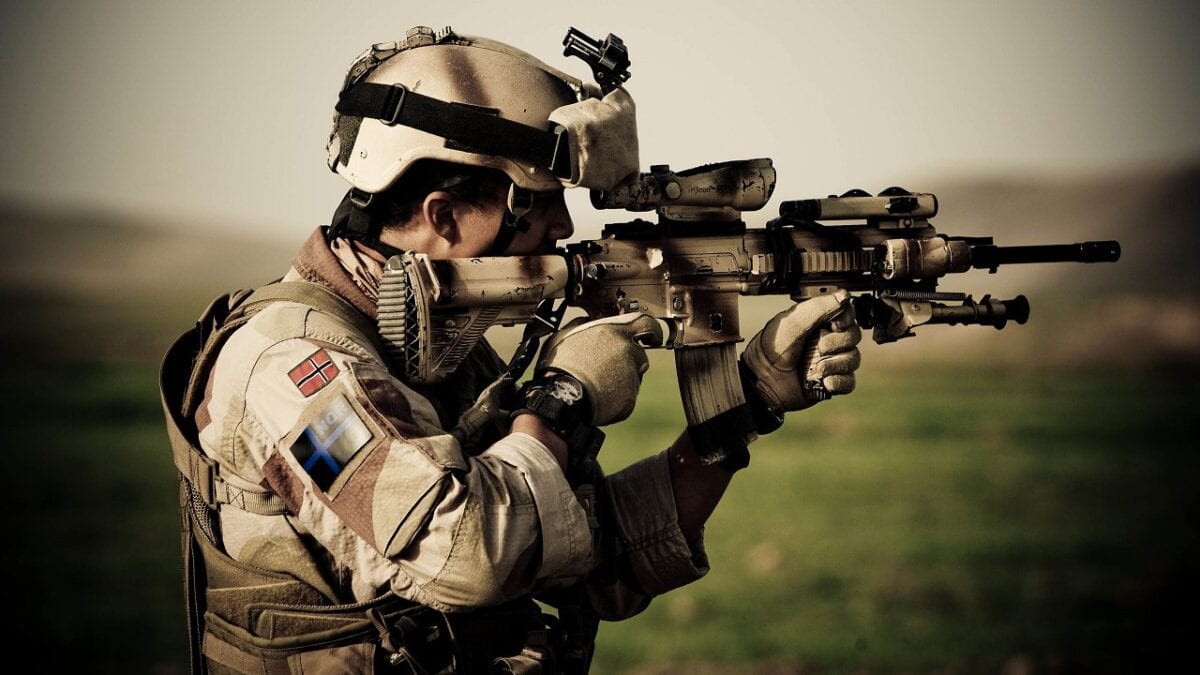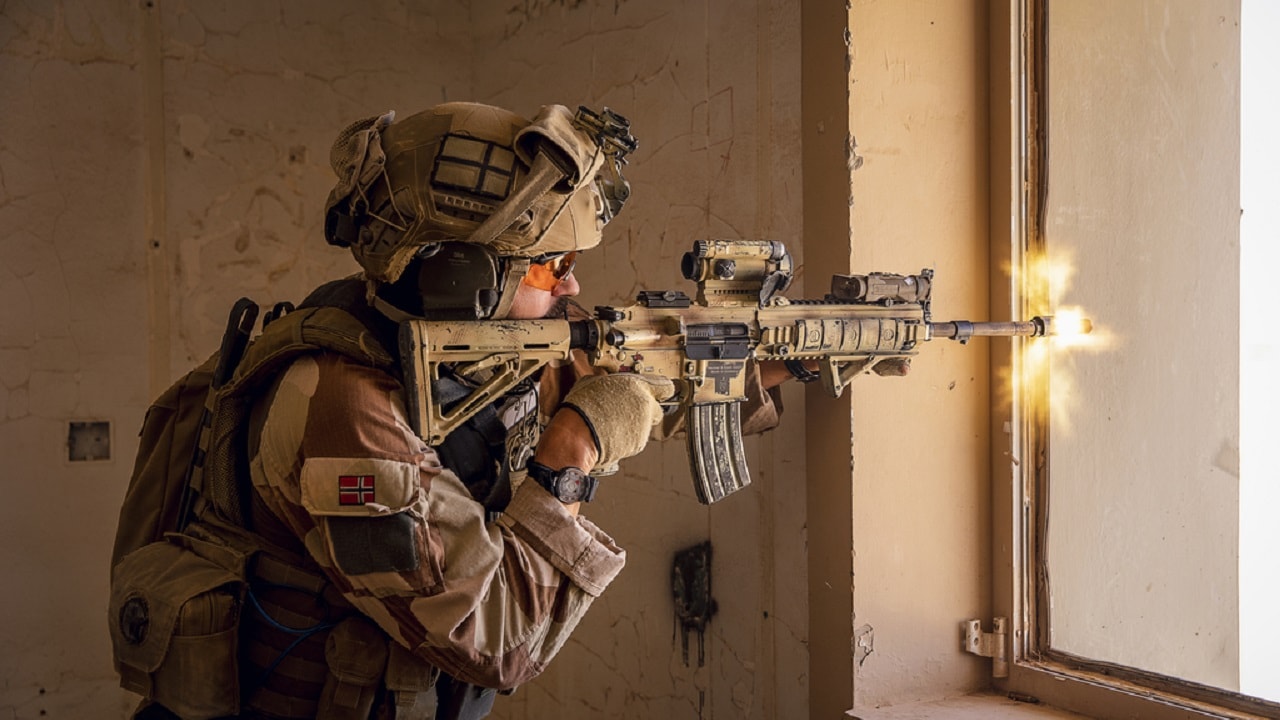Know This: Designated Marksman Rifle is a key component of any infantry rifle squad. Which weapon is the best? The DMR, or designated marksman rifle, has become an integral part of the infantry rifle squad. Numerous American and foreign forces have adopted some form of DMR into their squad. The designated marksman’s rifle sits between a standard infantry rifle and a sniper rifle. In the United States and in most foreign military forces, two calibers rule the DMR, the 5.56 and 7.62 NATO. Today we’ll explore the pros and cons of both.
The advantages of the 5.56 DMR
The 5.56 designated marksman rifle is often an accurized M16 equipped with an optic. These rifles have changed through time, and the most well-known is the Mk 12.
One of the big advantages of the 5.56 is that it is a lightweight rifle and uses lighter ammunition. Lighter rifles are easy to maneuver and easier to carry over long patrols.
The 5.56 ammunition allows you to carry more ammo and more ammo is often better than less ammo. A 5.56 DMR has less recoil and muzzle rise and is, therefore, easier to control. You can very comfortably control the gun, and less recoil ensures you can fire faster follow-up shots.
On a logistics front, the use of the same ammunition and magazines simplifies things for a rifle squad: It’s easier to carry one type of ammo and use it in a pinch. The 5.56 DMR is best suited with high-quality ammunition, but a shooter can also toss in standard M855 ball and rock and roll.
The advantages of the 7.62 DMR
The 7.62 DMR has been around a lot longer than the 5.56-caliber DMR. The military produced the earliest variants from old M14s and accurized the rifles for longer-range performance. The Russians used a 7.62x54R rifle for the longest time and essentially pioneered the DMR with the Dragunov.
Power is the main advantage of the 7.62 DMR. This full-powered rifle propels a .30 caliber round quite quickly. That translates to lots of power on the wrong side of the bullet. The 7.62 NATO round flies farther than the 5.56 and hits harder at common infantry fighting ranges. The use of 7.62 NATO rounds extends the effective range of the infantry squad beyond the 500 yards the 5.56 offers.
Further, the 7.62 NATO increases the squad’s ability to penetrate hard cover, this includes body armor, as well as standard fortifications. The round can penetrate better through glass, wood, sheetrock, and similar materials while retaining enough energy to remain lethal. In an urban environment, the more powerful 30-caliber round can better pierce through thin-skinned vehicles as well.
Total accuracy
Designated Marksmen are tasked with making accurate shots at both close and long ranges. At close ranges, precision may be required to hit a target hiding behind cover. At longer ranges, they might be tasked with hitting moving enemy fighters with accuracy. So, is one caliber better for a designated marksman?
Within their respective effective ranges, no. At longer ranges, the 7.62 round outperforms the 5.56. In terms of pure accuracy, it’s really more about the rifle and cartridge being used. Bulk military FMJ won’t deliver impressive results, and neither will a bulk military rifle. However, when an accurized and purpose-built DMR rifle is paired with high-quality ammo designed for accuracy, then we see the magic.
Designated Marksman Rifle: Who Uses What
Interestingly enough, when we look at the United States, we see examples of both 5.56 DMR and 7.62 DMR rifles being used. The Marine Corps has chosen the 5.56 route with the M38. The M38 is the M27 IAR with a 2.5 – 10X optic. The Army chose the 7.62 route with the G28, which is essentially the 7.62 variant of the HK416; they are using a 1-6X LPVO.
Around the world, we see a variety of rifles and calibers in use. The Russians stick to the classic Dragunov in a variety of configurations. The Brits use the L129A1, an AR 10-style rifle that uses the 7.62 NATO round and which was designed by Lewis Machine and Tool.

A Norwegian soldier in Afghanistan, armed with the HK- 416 N.
The Czechs use the HK 417, which the G28 is based on, and it predictably uses the 7.62 NATO round.
Austria uses an accurized and heavy barreled AUG in 5.56, and the Swiss accurize the SG 550 and equip it with optics. However, the Swiss are looking to adopt a 7.62 rifle in its stead soon.
The verdict: Designated Marksman Rifle Winner
Both have strengths and weaknesses, and they both shine in specific situations.
A good DMR is often worth its weight in gold, as is a good designated marksman. So, it’s more a question of doctrine and tactics. However, which do you think is better? Let us know in the comments below.

